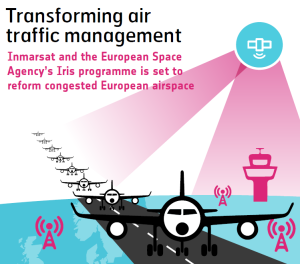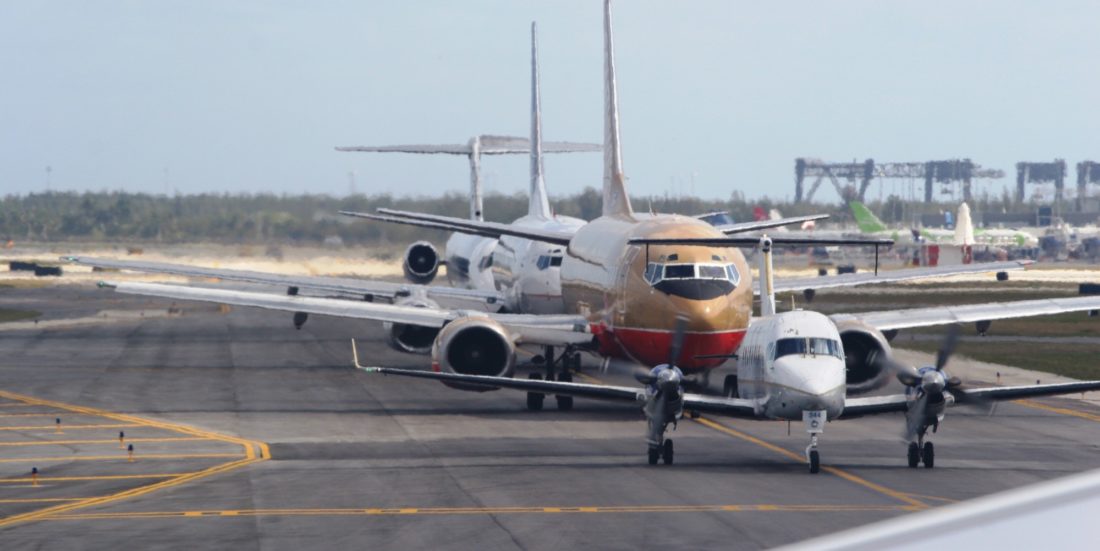European aircraft to use satellite communication
The European aviation sector is planning to introduce satellite communication between aircraft and the ground, resulting in fewer zig-zag flight paths, reductions in CO2 emissions, and saved time and money. Norwegian researchers are looking into data security risks.
Today, most communication between an aircraft and air traffic controllers takes place verbally. But aircraft are also able to utilise a data link system for sending and receiving instructions and information via text messaging. However, this service has limited range and capacity because it utilises heavily-used radio frequency bands – so of the thousands of flights operating across Europe, only very few use data link communication.
FACTS 1:
- A doubling of flights across European air space is expected during the next ten to twenty years.
- On average, due to the zig-zag nature of their flight paths, current flights are about 42 kilometres longer than they need to be.
- About 800 million passengers pass through more than 440 European airports each year.
The European Space Agency (ESA) has joined forces with the SESAR Joint Undertaking, an aviation framework programme, to ensure that the aviation sector can reap the full benefit of available satellite services. Last year, a demonstration project was completed during which a secure satellite data link (CPDLC) was established between an aircraft and an air traffic controller, providing both with continuous information updates.
Risk analysis
The drawback of the data link is that, as with all digital information, it is vulnerable to attack by hackers, who may, for example, want to send false information to the pilot. For this reason, SINTEF researchers have set in motion a highly detailed risk analysis of what might go wrong.
“We’re currently working closely with many organisations such as Inmarsat, Airbus, Boeing and Honeywell in order to acquire information”, says Karin Bernsmed at SINTEF. “All companies operate with their own security requirements, and our job is to look into the various threats that are giving them cause for concern”, she says. What kind of information can they send? Who has access to their systems? How can the code keys they use be best protected?

Satellite communication between aircraft and groundmanagement can get pilots to comply with departure and arrived times in an efficient and economical manner.
Testing
SINTEF researchers have previously developed an authentication system that enables pilots and air traffic controllers to confirm with whom they are communicating. Moreover, they have also been responsible for implementing the proposed system and integrating it with a smart card supplied by the UK firm CGI.
The system is currently being tested and will soon be certified for operational use.
“If you try to trick the system, you will be denied access to the service”, says Bernsmed.
The new study includes an assessment of how the authentication system can be expanded. For example, will the airlines get the opportunity to use it? SINTEF also recognises a need for more stringent security requirements. For example, confidentiality must be guaranteed when sensitive information is transmitted using the data link. The potential users of satellite communication are many, and achieving watertight security is a key element of the study.
Multiple applications
Because airline flight paths are closely linked to aviation corridors, pilots are in contact with several air traffic controllers, and in reality fly along a series of point-to-point sections. This means that flight paths may appear as “zig-zags”, and are not aerodynamically optimal. Satellite communication is one of many initiatives that will make it possible to transmit more precise instructions from air traffic control centres and thus achieve smoother flight paths. This will reduce fuel use and environmentally-harmful emissions.
Bernsmed’s colleague at SINTEF, Hans Erik Swendgaard, tells Gemini that flight safety will be greatly improved once it is possible to receive instructions and exchange information with air traffic controllers via a satellite data link across large expanses of ocean. “Another factor is that air travel is really and fundamentally all about customer satisfaction, and the airlines’ attempts to meet ever-increasing customer expectations of in-flight internet and broadband access”, he says. “It may be a pricing issue, but an offer of access to good internet connections via satellite will be attractive to many planning to take long flights”, says Swendgaard.
FACTS 2:
- ESA's programme for avionic satellite communication is called IRIS. Its aim is to look into the issue of satellite communication between aircraft and the ground. (https://www.esa.int/Our_Activities/Telecommunications_Integrated_Applications/ARTES/ARTES_programme_overview)
- IRIS and SESAR (Single European Sky Air Traffic Management Research) have been working together since 2008. Those developing satellite technology are coming into ever closer dialogue with those planning to develop and use the air traffic control services.
- SINTEF is working closely with several organisations within the IRIS programme, including Inmarsat, Airbus, Boeing, Honeywell, National Air Traffic Control Services (NATS) in England, Thales Alenia Space and Avinor.
- The authentication system developed by SINTEF is based on Public Key Infrastructure (PKI), which is a system facilitating the use of digital certificates.
- SINTEF is currently working on security analysis as part of the project 'Iris Service Evolution Study (2016-2017)', and has also lent its support to Avinor in the form of analyses of how far north the Inmarsat satellites will provide coverage.
One area which gets relatively little attention concerns the internal text messages exchanged between an aircraft and the airline’s ground stations (ACARS). This system is used to exchange a great deal of information that enables pilots to keep to their departure and arrival schedules as cost-effectively as possible. A satellite data link enables them to exchange text messages over wide expanses of ocean and other areas where radio channels are unavailable.
When will the system be ready?
An Airbus aircraft was the first to test the data link and smart card, on 23 February this year. The test was carried out as part of this project because it required the installation of dedicated on board equipment.
The question now is how to get the ball rolling. How much pressure can the aviation authorities apply to the airlines to persuade them to utilise the system? And how can we come up with a pricing model that also stimulates its use?
Researchers believe that the solution may involve a combination of aviation directives and pricing. However, when the satellite data link service is made available, there is reason to believe that many airlines will come to recognise the sound operative and commercial benefits it offers.
Others believe that routes to the Far East and across the Atlantic Ocean will be the first to take advantage of this new communications tool. It is they that will reap the benefit of the new technology – flying across wide expanses of ocean and land areas where the lack of ground stations generates problems today.




